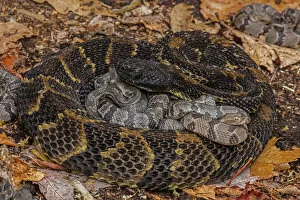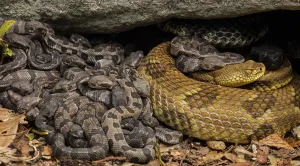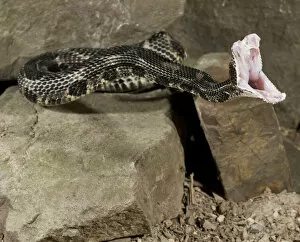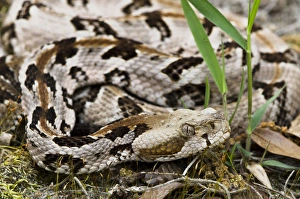Crotalus Horridus Collection
The Timber rattlesnake, scientifically known as Crotalus horridus, is a fascinating and venomous species found in the northeastern United States
All Professionally Made to Order for Quick Shipping
The Timber rattlesnake, scientifically known as Crotalus horridus, is a fascinating and venomous species found in the northeastern United States. This caption showcases various aspects of this snake's life. In Pennsylvania, USA, a female Timber rattlesnake with her newborn young can be seen. This heartwarming sight highlights the maternal instincts of these reptiles. Another image captures multiple females and their newborns at a maternity site, emphasizing the social behavior exhibited by these snakes. Gravid female Timber rattlesnakes are often observed basking in the sun to bring their young to term. These captivating creatures rely on external heat sources to regulate their body temperature during pregnancy. Moving southwards to Northern Georgia, USA, we see an intricate scale detail of a captive Timber Rattlesnake. The unique patterns and textures on its skin showcase the beauty of this species up close. A juvenile Canebrake or Timber Rattlesnake is also featured in captivity. Despite being small in size compared to adults, they possess all the characteristics that make them formidable predators. An intriguing model depicting the side view of a Timber Rattlesnake head reveals its nostril-like heat-sensitive pit—a remarkable adaptation that allows them to detect prey even in darkness or low light conditions. Traveling back in time through wood engravings from the late 19th century, we encounter an Eastern diamondback rattlesnake (Crotalus adamanteus) alongside its South American counterpart (Crotalus horridus). These illustrations remind us of how long humans have been fascinated by these creatures' existence and diversity across continents. Lastly, it is crucial to note that despite their venomous nature and fearsome reputation, populations of Timber rattlesnakes are declining due to habitat loss. Legal protection has been implemented in eight out of thirty-two states where they occur as conservation efforts strive for their preservation.











